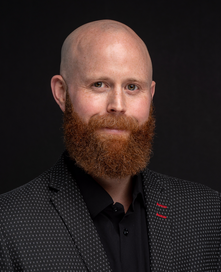 I highly recommend John P. Davis’ book “How to Get a Sales Job.” It is a short practical book that will give you confidence to do well in your next sales job interview. John can speak to this topic since he transitioned from working on Wall Street to take an entry level sales job. He brings a lot of depth and breadth to getting a sales job. Though John’s book is about getting a sales job, I think the book will help people get a non-sales-related job too. You still have to sell to get a job. And this book will teach you how to sell yourself to get a job. For those pursuing a sales job, this is a must-read book. After reading and studying this book, you will show up, stand out and likely secure an offer. You will have a conversation that will make you look like you know how to sell like a pro and drive revenue. Generating sales is a financial heartbeat of most organizations, especially those who engage in business-to-business (B2B) selling. Companies need competent sales professionals to grow. That means they need salespeople who can follow their sales process efficiently and effectively to drive revenue. John P. Davis’s book will help you look like a sales pro companies are looking for. The one thing the book emphasizes, which I wholeheartedly agree with, is that interviewing for a sales job is a proxy for doing your job. You must demonstrate your ability to follow the sales process by having a “sales process” to get the job. After reading this excellent book, I had a lot of questions for John. I narrowed it to five and sent it to John. Below you will find his answers to my five questions, and he also included three books that have influenced his thinking. I want to thank John for taking time out of his busy schedule to answer the five questions and provide valuable information to those who want a sales job. Disclaimer: I did not receive a copy of the book from the author. I purchased my own copy. Five Questions Question 1: When someone wants to switch to a sales job, what kind of questions should one be asking to know whether one is cut out for sales? Perfect question to start. I highlight a lot of this in the first chapter of my book because it’s so common for candidates. Two types of questions come to mind. The first type relates to your compensation. Are you willing to take a pay cut in your base? Do you understand how the commission will work? Do you think you can outperform your peers? Are you willing to start at the entry-level and work your way up? When answering these positively, you start to feel confident that you can make a successful shift into sales. But that’s also when the fear kicks in. You start to wonder why you’d put yourself through such a significant change. You contemplate risk and reward. It’s a lot to digest on your own and difficult to make your decision based on money alone… which brings us to the next type of question. The second type of question is related to your quality of life. Are you done with a 9-5? Do you want to work from home? How cool would it be to take customers to sporting events? Do you want to make your own schedule? Are you tired of working holidays? I found that the quality-of-life questions drove me into sales more than the compensation. Yes, I wanted to make more money, but I wanted a change of pace. I was done with the office, rush hours, and routine. I saw sales as an overall better lifestyle. This dynamic alleviated my fear of pursuing sales because I saw certain rewards outside of pay. The life of a sales professional is unlike any office job out there. It’s hard to resist. Ask yourself these types of questions and see if you’re ready for sales. Question 2: When someone is interested in making the switch to sales, how should one answer the lack of sales experience? Too many candidates dwell on their own lack of sales experience. They cite it as a reason for not getting into sales, and it’s the first thing an interviewer will dig into. However… Everyone has sales experience. This is the first thing that I teach my clients. Some experience is more obvious than others, but it just takes a bit of critical thinking to figure it out for yourself. Hiring managers are looking for people who have prospected a target group of people, set up a series of meetings, presented pricing, and negotiated contracts. That’s it. If you sold magazines door to door in middle school, you have sales experience. If you run the front desk of a gym, you have sales experience. If you drove for Uber, you have sales experience. Take your time to identify your own experiences. After that, it’s your job (and your job alone) to convince a sales manager that this experience is transferable. The best way to do this is to stress your ability to learn and your coachability. If you convince someone you have even minimal sales experience and that you’re coachable, you’re halfway home. One thing I’ll say is this – do not ever let someone tell you that you have no sales experience. I was told in an early interview that I’d never sell anything. I did not let that stop me. It was just an inexperienced manager looking for a rep in the late stages of their career instead of a younger and more eager rep to coach. Question 3: Do you recommend that if someone wants to work in sales, don’t apply for a job but instead make a cold call or use LinkedIn as if prospecting? Should one show how they would sell by the way they interview from prospecting to close? I talk about this a lot in my book. There is a full chapter on preferred Contact Methods. This is so important, especially if you want to work for a top-notch sales manager. The best sales managers want to see you in action. They will not read the applications that come in through the company’s website. This is like if you’re trying to sell something to Apple and you fill out a “Vendor Inquiry” form on Apple’s website. You’ll never hear back. Instead, choose the path of action. Demonstrate that you can reach out cold. Demonstrate that you can earn, book and set up a formal meeting. Demonstrate your phone skills and email etiquette. Demonstrate a close. All of this can be done by using LinkedIn, email, and the phone. Relying on a website application may get you an interview or two, but they’ll mostly be with the lethargic sales manager who is looking for a candidate at a good company as opposed to a candidate with a willingness to hunt for new business. I prefer action overreaction all day, every day. Question 4: If you run a word cloud generator of what the salesperson says in a job interview (both phone and in-person), what five words should show up as having the highest weight? Customer Relationship, Hunter, Motivated, Hungry, Quota. These five words pop up most. Everyone that I interview talks about how good they are at maintaining customer relationships. This is an interesting point because I don’t care as much for how good you are with customers… I care about how good you are at finding prospective customers. There’s a big difference. Hunter, motivated, hungry… everyone says these in an interview. The problem is that they just repeat them over and over again. Actions speak louder than words. I once had a cold call from a candidate who asked me within 5 minutes if I’d accept an in-person interview. That same candidate tried to close me for the job in the next 5 minutes over the phone. The whole conversation lasted 10 minutes, and I almost hired him. I ended up hiring him later, but the thing is – he didn’t have to stress that he was a hungry, motivated hunter. He demonstrated it to me. Demonstrate these things. Don’t just say them out loud. Quota: Everyone tells me they are over quota or crushed their quota. That is great. Some people talk about it too much. There is a lot to say about quota… if you’re smashing it, why are you leaving? If you are way under quota, why bring it up? My advice on quota is twofold - always tell the truth and get specific. I’ve interviewed reps at 200% of quota who had 1 deal that their manager gave to them when they joined the company. It would happen with or without them. I’ve also interviewed reps at 50% of quota who did 15 transactions on their own from start to finish. This is more impressive in my mind. So just tell the truth and be specific about your sales activity related to quota and less specific about the percentage itself. Question 5: Bank of America is no longer requiring broker trainees to make cold calls which have been a fundamental part of a sales job in the past. The reason for this change at BofA is that no one picks up the phone anymore. So what prospecting skills do salespeople need today to succeed? What have you found to be the most effective way to prospect today? Sales reps don’t call people. They get nervous, they hate it, they think people don’t answer, they don’t know what to say, they post articles on LinkedIn. There are 50 other reasons why reps don’t call people. I hear it all day long. Sales reps just don’t call people anymore. The worst reason is that they “have too many deals in play.” The majority of them use this as an excuse not to cold call. So Bank of America is technically correct. No one picks up the phone anymore. But it’s the sales reps who are at fault, not the prospects. There is no secret sauce here. Prospects still pick up the phone so you still need to call people. Use email as a tool to bring attention to your call. Use LinkedIn to do the same. Use marketing where necessary. But pick up the phone. It works. In an emergency, would you send an email? No, you’d call. My quota is always an emergency, so I call. I will leave you a few key points on cold calling. · Emails can be forwarded around the company, so be careful about sending the wrong message. · Cold calls cannot be forwarded, so it’s okay to mess up. · You get more and better information when calling versus emailing. · People like to talk on the phone. Three Book Recommendations My first recommendation is for anyone in sales or anyone looking to get into sales is “New Sales Simplified” by Mike Weinberg. I have read it a few times, and I always give a copy to the business development rep on my team. It’s the #1 book out there for finding new business and filling the top of your pipeline – frankly, the only thing that matters in sales. And Mike Weinberg is tremendous. Look him up and get his book today. My second recommendation is “Shoe Dog” by Phil Knight, the founder of Nike. This is a tremendous story of sales, hustling, and business. He was selling Nike’s out of his basement and competing globally with Adidas. You won’t be able to put it down, and it will help motivate you to do more. The third recommendation is “Atlas Shrugged” by Ayn Rand. This is not for the weak of heart. It’s wicked long… but packs a powerful punch. It’s about being productive and why that matters. What John is Working On He is currently working directly with former professional athletes and graduating D-1 student-athletes interested in entry-level sales. Reach out to him for more information, especially if you are an athlete, league representative, or coach. He can be reached at [email protected]. Resources Please listen to John P. Davis’ appearance on the podcast “Sales Enablement” with Andy Paul: https://www.ringdna.com/podcasts/how-to-get-a-sales-job-john-p-davis-episode-911 Please check out John P. Davis’ article on Sales Hacker: https://www.saleshacker.com/how-to-interview-for-sales-jobs/ Please check out John P. Davis’ article on Sales Vane: https://salesvane.com/sales-job-looking-for-the-highest-paying-job-in-the-world/ Contact Info Email: [email protected] LinkedIn: linkedin.com/in/john-p-davis-548a7b22 ##### 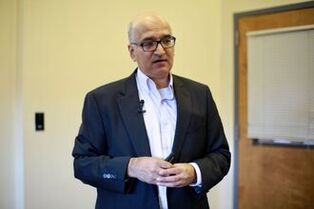 I guide people make money, grow money and acquire financial freedom. I do it by guiding people focus on thriving on high stakes stage whether it's for a job interview, career advancement, a sales presentation or a high-stakes speech. I wrote a practical, no-nonsense book on success titled Winning Speech Moments: How to Achieve Your Objective with Anyone, Anytime, Anywhere. The main idea of the book is that if you want to succeed in anything, you must create a winning speech moment. That is all people will remember. Just Do IT and WIN! To get started with executive coaching I offer Intro to Coaching program that consists of two sessions for $300 where I help people answer a simple, yet difficult question: Tell me something about yourself. You must nail this to make a good first impression. Let's get this right for you so you can get ahead. Get the Free Speech Checklist Email: [email protected] Phone: 732-847-9877 Time is Money, Communication is Wealth
0 Comments
 Fred Dust Fred Dust Thomas Watson, Sr., President of IBM from 1914 to 1956, coined the phrase "Nothing happens until a sale is made." But a sale doesn't just happen; you must make it happen. And that often involves having good conversation skills. In this blog post, I interview Fred Dust, an expert on creative conversation. Suppose you want to succeed in life, business or relationships. In that case, you must cultivate and master your conversation skill no matter how long you have been having conversations that matter. Most of us think we know how to have good conversations with people. But there is a lot involved in developing creative conversation skills to move things forward. I learned this from reading Fred Dust's outstanding book, "Making Conversation." Conversation is like breathing. We all do it but hardly pay much attention to it. As you will learn in the book, your success often depends on how effective you are in designing creative conversations. Fred Dust has become an expert in designing creative conversation from his life and work experience. When he once had a meeting with the Prime Minister of Greece, George Papandreou, Dust gained valuable insight about conversation that "designing slower dialogue may actually allow us to solve big problems." According to Dust, a creative conversation must move things forward. He writes in his book that "It must help us shift from thinking and talking into the act of doing. Agreement cannot be enough; action is required… [It] must work to resolve differences, must explore hard issues, and must be aimed toward a positive outcome." Dust applies what he learned about the design aspect of conversation, working as a Senior Director and Global Managing Director at IDEO, a global design and innovation company. A good design of a conversation consists of seven essential components: Commitment, Creative Listening, Clarity, Context, Constraints, Change and Create. Spend time and practice these seven components of creative conversation. You will start having good conversations and will start moving things forward, even a sale. I want to thank Fred Dust for answering the questions and Lindsey Armeen for facilitating getting this blog post completed. Five Questions Q: How much preparation do you go through before any meaningful conversation you are going to have? Can you share an example of preparation you did recently before having a conversation? How did it go? Do you do pre-mortems before having a conversation and post mortem afterward? To begin where you end, I don't tend to call things pre-mortems and post mortems as that assumes that the conversation has already died. In my book, I talk a lot about setting the space ahead of time. Thinking about context and the explicit and implicit rules of the conversation and most especially committing to the conversation. When we think about 'preparing' for a conversation, our natural default is to think -"What is it that I am going to say?". And what I am advocating for is sort of the opposite. Spend your time thinking about everything but what it is you are going to say. For example, is the conversation taking place in an environment and setting that is conducive to the outcome you are seeking? Before every team meeting, I would always clear the room and the whiteboards of everything non-essential. Everything that might distract from what our conversation was centered around. But I even still do this with my husband before dinner every night. We clear the table of everything. Or even more simply, ask yourself if you are committed to the conversation. Not committed to being right. Not committed to the answers you want to hear. But committed to giving of yourself fully at that moment to the other person/people in the room. Q: How should one design a conversation during a job interview? Here is what I usually recommend to people I coach. You can tell me what you would do to make the conversation design better. Intro -- Brief two to three-minute statement that includes the following: ● Message ● Narrative ● Value you can deliver to an employer Middle: Focus on one to three problems you can solve that will add value to a company Ending ● Validate that you understand the job with the interviewer ● Address any concerns interviewer may have about your ability to do a good job ● Summary:
That's a really great and useful template. Every interview is nerve-wracking no matter who you are, and so preparation templates like this are often the best way to cultivate a feeling of confidence vis-a-vis preparation. But it reminds me of a story one of the guys on my team told me about when he was a Producer auditioning actors for parts that taught him a great lesson about interviews. That lesson was; make a genuine connection first, worry about memorizing the lines second. Often the very simple question I will ask someone in an interview is; tell me your origin story, like you we're a Marvel superhero. That's because like the producer, I'm looking to see if this person fits the part, do they have a good connection with what the job will need. Clearly, job interviews are not acting gigs. Preparation and gameplans like the one above are super important. But I tell people that being completely present and available to the conversation, creating a real human connection with the person you are talking with, often goes just as far if not further than the polished interview. So why not do both! Q: When you write in your book that conversation "must work to resolve differences, must explore hard issues, and must be aimed toward a positive outcome," do you mean from both sides? If so, then a conversation you are talking about is really a negotiation? Again if you say negotiation, you see negotiation. I feel like the word makes a conversation sound hostile, it's why I don't use it, but in fact, no, I don't really mean negotiation. Our conversation scripts are operating without our "approval" or without our conscious awareness of them\ all day long. So my goal is just to help people get better at noticing those scripts, so they don't unintentionally derail or prevent a productive conversation from happening. To get to your question, when we say "negotiation," for many of us, that word evokes car salesman or FBI hostage negotiator. And while both of those things can be illustrative examples of kinds of conversation, their connotation is mostly adversarial, which is a script I'm trying to steer us away from. I say this because I am not a postmodernist. I don't believe all language games are power games. I believe that language games can also be mutual discovery games and communion games. So good conversation is about exploring both where tension and alignment points are, figuring out why they're there, and then seeing what if anything we can do about it. That is a negotiation of sorts technically, but it's also so much more than that. It's a collaboration and a journey too. One final note on that point, if both parties are acting in good faith and are committed to the conversation but cannot resolve a tension point... I tell people that that's ok too. The idea I try to get across in the book is that it's ok to arrive at those moments. But you have to try first. Q: With short attention spans, how can you make it easier for someone to listen to you? How do you keep it short, simple, and impactful? Should you use simple sentences? Should you keep repeating the main message you want to convey? Should you not assume that the other person knows what you know? I LOVE this question, thank you. Some of the best feedback I have been getting from the book is centered around this topic which surprised me at first but makes total sense in retrospect. Our days feel compressed. We are on zoom nonstop. Our time and attention are fractured. And it is more difficult to stand out over the noise. So in light of that, my advice to people is two-fold. 1.) One of my entire chapters is devoted to clarity. Make things simple and accessible. We are drowning in word-salads and corporate lingo and legalese. Clarity creates lasting impressions in the listener's mind and makes it so the conversation stays accessible to the people who need to access it. 2.) I tell people to get good at telling what I call "illuminations." Illuminations are short 2 minute stories that capture the essence or spirit of what you are trying to convey and reveal to the listener something about you. All illuminations should have four things in common. Number 1, they are short. Number 2, they should end where they start. Number 3, they should all have a twist or a surprise baked in them, and Number 4... well in the spirit of Number 3, you need to read the book to find out. Q: To move things forward, should you ask "What can we do?" instead of "What do you think?" so the other person has to address what you can do together to advance something? Oh yes, I love this question as well thanks again. One of the guys who works for me is a big neuroscience nerd, and he always wants to talk about left-brain/right-brain synchronization and activation, and I just always remind him he's forgetting my chapter on clarity. He would say that we need to get out of left-brain analytical/rigid thinking where conversations can get hung up. Instead, I would just say; we need to get into proactive doing. Simply put, if you can't talk with someone, if there is just nothing you can agree on, then go make something with them. Do something with them. Build a barn. Bake bread. Clean out the garage. Play a sport. Both of these are getting at the same idea, of course, it's just my way of phrasing it is more fun. Books Recommended by Fred Dust Jubilee: Recipes from Two Centuries of African American Cooking: A CookBook by Toni Tipton-Martin The stories will reveal elements of history, surprise as well as sustain you in remarkable ways. Jane Austen Novels: Pride and Prejudice Sense and Sensibility Persuasion Mansfield Park Emma Northanger Abbey AudioBook Collection If you want to see how witty and powerful conversations happen and how gossip can change the world. Giving Voice to Values: How to Speak Your Mind When You Know What’s Right by Mary Gentile. Mary goes deep into what allowed whistleblowers to call out injustice with some surprising revelations on how and who can do it. Fred Dust’s Contact Information LinkedIn: https://www.linkedin.com/in/freddust/ Twitter: @f_dust Website: https://makingconversation.com/ Fred Dust’s Appearances Discussing “Making Conversation” YouTube: Making Conversation: Seven Elements of Meaningful Communication by Fred Dust Host: Chris Voss How to Make Meaningful Conversation Host Mary Stack - GBH Forum Network Making Conversation Host: George Hammond - Commonwealth Club if California Audio Podcasts The Unmistakable Creative with Srinivas Rao How to have the most challenging conversations of your life Curious Minds at Work with Gayle Allen CM 180: Fred Dust On Making Conversations Better Happen To Your Career Make Better Conversation: Key Lessons To Connecting With Anyone The Conversation Factory with Daniel Stillman Making Conversation with Fred Dust ##### 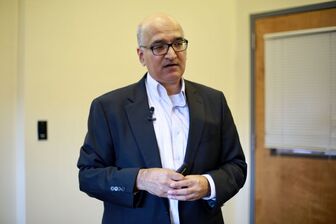 I am an author, speaker, career success coach. I guide people thrive on high stakes stage whether it's for a job interview, career advancement, a sales presentation or a high-stakes speech. I am the author of a practical book on speaking titled Winning Speech Moments: How to Achieve Your Objective with Anyone, Anytime, Anywhere. The main idea of the book is that if you want people to remember your speech and take action, you must create a winning speech moment. Please download the free speech checklist I created that I always use to create a winning speech for any occasion. Please contact me if you would like to thrive on high stakes stage. You can reach me at [email protected] or 732-847-9877. Note, if you are an author, executive, podcaster or interesting and would like me to interview with five questions and then publish it as a blog post and promote it on LinkedIn, Twitter and Facebook and become famous, please contact me.  Mario Gerard, Host of TPM Podcast, TPM Blogs and Principal TPM Mario Gerard, Host of TPM Podcast, TPM Blogs and Principal TPM Mario Gerard is a great resource that I highly recommend you turn to if you want a better understanding of different technical jobs that may interest you and for which you may qualify. Even if you are happy with your current technical job, it does not hurt to know what potential path you have available in your career. Mario uses his vast experience as a technical professional to teach others on different technical opportunities available to pursue in his or her career. And what it takes to get those jobs is what it takes to succeed once you start the jobs the first 90 days, the first year, and how to become a competent technical professional and take on more challenges. Mario is an excellent communicator. He simplifies things so that anyone can understand. He is an outstanding teacher. He asks questions that we want to ask of his guests. I have recommended his blog posts and podcast to others. They have found it very helpful. To give you an example, you can check out his podcast with his guest, Visva Mohanakrishnan, Senior Technical Progam Manager (TPM) at Amazon, in two parts. In the two podcast episodes with her, I learned about the following items:
In his podcast, Mario not only asks questions to get the perspective of his excellent guests, but he also provides his perspective from his experience. You will get a solid understanding of what is required to succeed in different technical jobs. I want to thank Mario Gerard for taking the time out of his schedule to answer my questions. Five Questions Q: Can you explain the role of a technical program manager (TPM) as it exists at many companies? Do you see this role evolving in the future from how it is today? In short, a technical program manager (TPM) enables tech organizations to achieve their goals faster. This is done by the TPM being the single point person to be responsible for critical programs. The reason this role has become critical in recent times is that every program that is critical requires the TPM to effectively communicate technical issues and problems and work with several dependencies that are owned by other teams. The role is already significantly evolving, we can see this because we now have TPMs who specialize in certain areas like front end systems, backend systems, operational excellence, cloud technologies, payments, fraud, etc. Q: TPM is a hard job, so what kind of people you can turn to from whom you can learn and get advice? Who did you learn from when you were starting out? And now that you are principal TPM, whom do you go to when you want to bounce off ideas? Is there a support group for TPMs to share ideas and discuss best practices? Have you seen this at other places where you have worked? Generally, as a TPM, you can get advice and pointers from more experienced TPMs within your own organization. Also, you can always get help from SDMs (Software Development Managers) as well. I was lucky to have a very good peer group of TPMs both within the organizations I have worked at and also had a good circle of TPMs outside my organization who I could use to bounce ideas with. As a Principal TPM, I use my management chain to get help when required and use my peer network of TPMs within the organization heavily. There are people who are experts at solving certain types of problems; knowing who they are and what each person's expertise is generally a great start. I also help TPMs at various organizations with advice when they reach out to me. Q: Can the technical program manager's role be divided between the software development manager and the product manager? Or is it that there are too many products and software development projects that have to be managed in a coordinated manner to ship a product that there is a real need for a TPM? Yes, the TPM role could be divided between the SDM and a PM if they have the right set of skills. However, if both those roles have their hands full and need someone who could help their team scale, a TPM would be a great addition. The same goes for teams that do not have a Product Manager. There are several instances where a TPM also takes on the role of a PM's role when the team does not have a PM. This is particularly true when the TPM is very technical, and the Product that is being developed is also technical in nature or when the TPM has significant Product based knowledge. In general, the need for a TPM is generally higher if the organization is structured in such a way that there are too many dependencies outside the primary team's control. Q: What does a typical day (if there is one) look like for a technical program manager? A typical day for an embedded TPM would involve the following activities:
Q: Have you worked at a company where you had both a technical program manager and a business program manager? Is there a handoff that takes place from a TPM to a BPM as you the Product is close to being shipped? Do you even need both a TPM and a BPM? There have been instances where we have had a business PM whose primary responsibility is to interact with customers. This is generally true in an organization where the Product is a B2B product. In this type of organization, the BPM is generally responsible for customer interactions, dealing with legal, creating a go-to-market plan, working with press relations, etc. While the TPM is more internal-facing and is primarily responsible for building and shipping the product. Three Books Recommended by Mario Gerard Measure What Matters: How Google, Bono and the Gates Foundation Rock the World with OKSs by John Doerr Solution Architect’s Handbook: Kick-start your solutions architect career by learning architecture design principles and strategies by Saurabh Shrivastava, Neelanjali Srivastava, Kamal Arora Art of Scalability. The Scalable Web Architecture, Processes, and Organizations for the Modern Enterprise by Martin Abbott and Martin Fisher Resources Mario Gerard Website TPM Podcast Mario’s Contact Information LinkedIn: https://www.linkedin.com/in/mariogerard/ Email: [email protected] Twitter: mariorgerard ##### 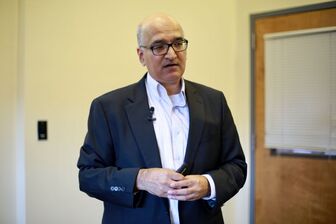 I am an author, speaker, career success coach. I guide people thrive on high stakes stage whether it's for a job interview, career advancement, a sales presentation or a high-stakes speech. I am the author of a practical book on speaking titled Winning Speech Moments: How to Achieve Your Objective with Anyone, Anytime, Anywhere. The main idea of the book is that if you want people to remember your speech and take action, you must create a winning speech moment. Please download the free speech checklist I created that I always use to create a winning speech for any occasion. Please contact me if you would like to thrive on high stakes stage. You can reach me at [email protected] or 732-847-9877. Note, if you are an author, executive, podcaster or interesting and would like me to interview with five questions and then publish it as a blog post and promote it on LinkedIn, Twitter and Facebook and become famous, please contact me. Ethan Evans is one of the best go-to sources to get an excellent understanding of different jobs you can move into in the tech space. If you want to get ahead in your tech career, you must follow Ethan, listen to his podcast, and watch his YouTube channel. Ethan will guide you on potential technical career paths you may want to pursue, what you have to do to get these jobs, and how to succeed in these jobs. Careers don't just happen; you have to make it happen. Ethan will give you some straight talk that you have to work hard and smart to have a good career in tech. Ethan's tag line on his website (ethanevans.com) is "Sharing what I have learned to help you succeed." He has tremendous credibility in providing great career advice since he has done it all in the technical area. He worked for startups for twelve years and at Amazon for fifteen years, with the last seven years as vice president. He recently retired from Amazon to focus on speaking, coaching, and consulting. What makes Ethan interesting to listen to is his passion for tech and his ability to communicate effectively about different tech jobs. He is a must source for people working in tech jobs and those working in non-tech jobs to understand better the jobs tech people do and connect with them so both tech and non-tech people can exchange ideas and learn about each other's jobs and make the company successful. I learn a lot listening to Ethan's podcasts or his guest appearances on other podcasts. You will too. In this blog post, Ethan was generous in answering five questions about a not well-understood position, but very important for products' success in companies like Amazon--technical program manager. I want to thank Ethan for answering my questions and for all he does to help people. Five questions Q: Can you explain the role of a technical program manager (TPM) as it exists at Amazon? Technical Program Managers (TPM) at Amazon work to make things ship. I think of this in terms of questions.
Of course, no job can be boiled down to a single word, but TPMs focus on what it takes to get a product to release by a particular date. This includes the debates about what should be included in each sprint in an agile environment; the TPM is often the Scrummaster if there is one. It also includes coordinating with other teams to align schedules because rarely is any one team able to launch something major in complete isolation. Responsibilities will always overlap, but the TPM is the main owner of shipping the project on time. Q: What should a new TPM do in the first 90 days to ensure success? At Amazon, the core of early success is "start doing something today." Those who feel they need to sit back and absorb, or who need to test the waters and gain approval before acting, ultimately don't do as well as those who jump in and contribute. This is a challenge for TPMs because, in many ways, the TPM job is less of a "first 90 days" job than many other roles. This is because the TPM is often working on a primary goal that is 6 - 24 months long. But, there are things the TPM can do on day one, such as
This basic loop of understanding blockages and working on them will immerse you in learning and start moving the project towards completion. Through the 90 days, you then must learn the architecture, learn the web of dependent teams and technology, and move up from the daily blockages to the goals and strategy of the project. But the thing you can do on day one is ask a developer, "what do you need today," and go get it for them. By contrast, if you ask a manager, "what meetings can I sit in on to learn, who should I meet, what should I read" you are doing nothing wrong, but you are being less proactive and will earn less respect. Q: What skills you must have to move into a TPM role, and what skills you must develop to be successful? Particularly at Amazon, the T is for technical, so the basic skill required is to have the technical ability. This often means software development ability, but TPMs in other fields, such as hardware, can meet this requirement with skills in those fields. The skills you must develop are in project management (organizing a set of tasks and people to accomplish a goal by a given date), program management (thinking longer-term about the strategic direction of the product or service, not just the current release), and influence (ability to get others to help you hit your goals). The TPM must be good at driving forward progress every single day while also "looking around corners" to anticipate future needs. The best TPMs keep the work of their teams unblocked proactively so that precious developer time is never wasted. They are also very good at getting other teams to do what is needed to support their own team. Q: What kind of jobs people move into after working as a TPM for several years? The most common next move for a TPM is to become a software development manager. In some sense, dev managers need both project and personnel management skills. Becoming a TPM allows the person to break apart the challenge of learning both groups of skills into two steps. As a TPM, they learn project management and influence skills. Then as a dev manager then learn about directly managing people. Some TPMs go in the opposite direction, away from directly building software personally, to become Product Managers. In these cases, the TPM is usually motivated by the desire to have more input into what gets done. They wish to shift from owning the execution of the direction to owning the definition of the direction itself. Overall I think the TPM skill set is a great one. My first real leadership role in my career was as a TPM, though the company did not have that title. When I think of my core skill set, I consider myself to be a TPM to this day, even though I added other skills and responsibilities to that core as I became an executive. The core of my success comes from organizing a group of people to deliver results quickly. Q: Can you explain what you mean by your famous saying, "Results are the Currency of Credibility," and how is it applicable to a technical program manager? When I created the phrase Results are the Currency of Credibility, it was because I realized that people were more likely to listen to someone who had accomplished something meaningful in their sight. Talk is cheap, and lots of smart people have many opinions. One way to differentiate how much weight to give to the opinion is to look at what the person has accomplished, what results they have produced. When I see someone with lots of results, I listen to their ideas and opinions more closely, even if intellectually I may disagree with what I am hearing. I reason, "this person has accomplished great things and has this belief. Though the belief sounds strange to me, perhaps I had better put more effort into understanding what they mean, because it is working for them." For a TPM, the direct application of this phrase is in its influence on others. If they have shipped a lot, their teams will trust their decisions. Other teams, product managers, and development managers will tend to accept what the TPM asserts about their resource needs, schedules, and plans. What I specifically advise people is to make an impact by delivering valuable results before doing too much talking about what you think should change about the team or company. Five Books Recommended by Ethan Evans 1) Decisive: How to Make Better Choices in Life and Work by Chip and Dan Heath 2) Leadership and Self Deception: Getting Out of the Box by The Arbinger Institute 3) The Four Hour Work Week by Tim Ferris 4) I Moved Your Cheese: For Those Who Refuse to Live as Mice in Someone Else’s Maze by Deepak Malhotra 5) Eat That Frog: 21 Ways to Stop Procrastinating and Get More Done with Less by Brian Tracy If you would like to see Ethan's full book recommendations, then please click here. Ethan’s Contact Info: Website: https://ethanevans.com/ Twitch Channel: https://www.twitch.tv/search?term=ethanevans LinkedIn: www.linkedin.com/in/ethanevansvp Twitter: @EthanEvansVP Facebook: https://www.facebook.com/ethanevansvp YouTube Channel: https://www.youtube.com/channel/UC-BAdkBGjOIlccGLZ3jbLiA Ethan Evans’ Podcast: https://podcasts.apple.com/us/podcast/ethan-evans-podcast/id1461708488 TPM Podcast by Mario Gerard in which Ethan was the guest talking about technical account manager role: https://www.mariogerard.com/tpm-podcast-with-ethan-evans/ ##### 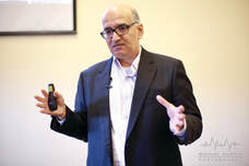 I am an author, speaker, career success coach. I guide people thrive on high stakes stage whether it's for a job interview, career advancement, a sales presentation or a high-stakes speech. I am the author of a practical book on speaking titled Winning Speech Moments: How to Achieve Your Objective with Anyone, Anytime, Anywhere. The main idea of the book is that if you want people to remember your speech and take action, you must create a winning speech moment. Please download the free speech checklist I created that I always use to create a winning speech for any occasion. Please contact me if you would like to thrive on high stakes stage. You can reach me at [email protected] or 732-847-9877. Note, if you are an author, executive, podcaster or very interesting to talk to and would like me to interview with five questions and then publish it as a blog post and promote it on LinkedIn, Twitter and Facebook, please contact me. 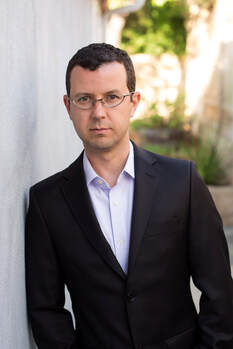 Thales Teixeira, co-founder of Decoupling and former professor at Harvard Business School. Thales Teixeira, co-founder of Decoupling and former professor at Harvard Business School. In business today, the one thing that is becoming certain is that either you will disrupt an incumbent in an industry or be a victim of disruption by an upstart sooner or later. This has been going on for a while. As Andrew Grove aptly put it with the title of his book, published in 1988, that "Only the Paranoid Survive." Today, if alive, Grove would probably title the revised edition of his book, "Only the Hyper Paranoid Thrive." The reason for this is that any incumbent can be disrupted faster than ever. Why is disruption happening so fast and often? Why is no one immune to being disrupted? I thought it was competition leveraging emerging technologies that disrupted different industries. After reading Professor Thales Teixeira's outstanding book, "Unlocking the Customer Value Chain: How decoupling drives consumer disruption," I have changed my mind. He convincingly argues that "new technology isn't driving disruptions today. Customers are." Innovation alone will not save them, but their ability to transform their business models will. Technology makes it faster for upstarts to disrupt an incumbent once the upstarts understand what activities consumers are ready to decouple in the value chain of consumption that incumbents are providing. The key concept that Professor Teixeira posits is that disruption occurs when an activity can be decoupled in the value chain of consumption. These are activities that the consumers are willing to look elsewhere to satisfy their needs and wants. To thrive today, both upstarts and incumbents must stay very close to consumers to see any signs of potential activity that they are looking to break from the value chain of consumption. Once any decoupling activity is identified, act fast. If you want to understand disruption in a refreshing way, you should get this book and study it. You will be much smarter than before in discussing disruption with business leaders. It will certainly enhance your image of being a thought leader. It may help you get ahead in your career since you will know what it takes to disrupt an incumbent or, if you work for an incumbent, see before others on ways to avoid being disrupted from upstarts. After reading the book, I had a lot of questions. Professor Teixeira was generous with his time to answer them, which I have posted below. I am spreading his ideas and message in this blog post. I thank Professor Teixeira for his generosity and time. What should you do to get familiar with Professor Teixeira's ideas of disruption?
Prof. Thales Teixeira is the co-founder of digital disruption consultancy Decoupling.co. Previously, he was the Associate Professor at Harvard Business School, where he taught for 10 years. There he has taught MBA, doctoral and executive-level courses in Marketing Models, Digital Marketing and Ecommerce. His two primary domains of research constitute Digital Disruption and The Economics of Attention. Five Questions Q: Why is it so difficult for incumbents to "decouple" the chain of consumption? Or is it that they are just paying attention to customers who are following their chain of consumption, so they don't see a potential threat to "decouple" the existing chain of consumption? Decoupling is the breaking of the links of the customer's value chain (CVC) by a digital disruptor that has been historically fully performed by incumbents companies. A recent industry that is under tremendous attack by startups performing decoupling is insurance, in all its forms. Traditionally, companies like AIG, Liberty Mutual, State Farm, and Ping An in China, have fulfilled most of the insurance shoppers' CVC. They educate customers, help them choose, sell them the policy, bill them monthly, service the policy, take and pay claims. Recently, digital startups have decided that they can better attract, educate and sell insurance to people, often using a web or mobile app environment. But interestingly, once they sell the insurance, they often pass on the customer to an incumbent insurance company to underwrite the policy and sometimes to service the policy, in effect pawning off the consumer to a traditional insurer. In doing so, startups like Lemonade, Ladder, Metromile, and Trov are in effect decoupling the insurers by "stealing" the activity of customer acquisition and sometimes customer service. In most cases, they do not create the insurance products, nor do they underwrite and handle claims. You might ask, "Why did AIG not do that themselves?" Well, I can never speak for one single company, but I have seen incumbents in manufacturing, retailing, banking, education, software, healthcare, fashion, and many other industries get decoupled. In the aggregate, what I have learned is that (a) established companies do too much and, as a consequence, cannot possibly do everything very well, and (b) established companies are too slow to adapt and change. Incumbents are like large nations. They can't be everywhere and be doing everything right. Things slip through the cracks, and their consumers get upset. Instead of quickly addressing the issue, employees of large companies take too much time or purely don't take enough interest in resolving customer pain points. So, when consumers' needs change, startups are the ones fast enough to identify them and build for those new customer needs. Going back to insurance, consumers—mostly millennials, but also other tech-savvy ones—wanted to avoid dealing with old-school insurance agents that are pushy and try to get you to buy expensive policies. These new consumers want convenience, self-service, and simplicity. That is what decouplers in insurance offer them. It has taken some time, but incumbents are now catching up. Q: Are there any examples you can cite where an incumbent was able to respond effectively to the "decoupling" threat posed by startups and how did the incumbent do it? Best Buy responded well to Amazon. Best Buy has taken a bite out of showrooming not by forcing customers to buy in-store, but rather by rebalancing its own revenue sources. Best Buy initially tried to prevent customers from showrooming (a retail form of decoupling). At first, they considered changing the barcodes on products to make them hard for shoppers to search for online. Best Buy even considered using signal jammers at their stores, like the ones they use to keep prison inmates from using cell phones. Eventually, Best Buy executives realized that Amazon and showrooming are not going away any time soon. They decided to charge manufacturers for putting those items on the shelf. When a company like Samsung puts TVs on display at Best Buy, Samsung is benefiting whether you buy it from Best Buy or Amazon. So Best Buy decided to charge for that value they create. This is what I call "preemptive decoupling" in my book. But this is extremely hard to pull off. The reality is that most incumbent companies have business models that are tightly coupled, and they need all the pieces to function together in unison to be viable. At Decoupling.co, my colleagues and I have been working with and advising companies such as Samsung, Microsoft, Hyundai, American Eagle, and many others to help them effectively respond to digital disruption and the rise of decoupling by redesigning and rebalancing their business models to be more sustainable and robust in a digital future. As in teh Best Buy case, technology is secondary. Q: Are there examples where a "decoupling" effort from startups did not succeed? Many. WeWork. Trov (the consumer app only) in insurance. One Kings Lane in furniture. Beepi in used car sales. Juicero in fruit juices. And the list goes on. The use of an innovative business model is no guarantee of success. In my research, I have identified two major causes of startup failure. First, and unsurprisingly, not acquiring enough customers is the major cause of death among startups. None of these startups that I just mentioned had this issue. But to varying degrees, they had the second one. Startups acquire enough customers as they create much value for them, but they cannot capture a sizable enough portion of said value in order to survive going forward. Monetization problems, value leakage, and limited value-capturing is the second most common reason for startup failure. My book provides a framework for detecting and "plugging in this hole." Q: Have you seen an incumbent decouple its own activities, and did it better than a startup that was trying to decouple the same activities in the chain of consumption? I am not aware of one single case and would love to get an example if any of your readers has one to share. It seems that, at least in terms of disruption by decoupling, the attackers are more motivated and apt at gaining market share than the defenders are at retaining their customers' activities. It's often a reactive process for incumbents. Q: You write about decoupling, but aren't many customers want things to be more coupled in the chain of consumption, so there is a one-stop-shop to simplify the chain of consumption? Yes, that is certainly right. I would love to have all my needs serviced by one big company instead of catering to multiple establishments. I would love to buy every food item I need at one grocery store, every news in one news media, every entertainment content with one streaming company, and every financial service with one single bank. Simplicity, convenience, lower transaction costs, are driving forces that influence the consumer into consolidation or integration. That is what I call integration forces, and they act on all of us by the urge of, as you say, "simplify the chain of consumption." Unfortunately, we also need variety, expertise, unique resources, and niche offerings. We consumers are also driven by these so-called specialized needs or "forces of specialization," as I have termed it in my book. The fact that a higher specialization force than an integration force acts on me during grocery shopping every time I go to Trader Joe's explains why, when I have time, I get my liquor in another store, or my pastries in a local bakery. The same phenomenon has made me have a bank account at Chase but have a brokerage account at Robinhood, a life insurance policy at Geico, and a stock price feed at Yahoo Finance. By offering me other benefits, in a very specialized manner, they induced me to decouple activities in my CVC that originally were fulfilled by JPMorgan Chase. Books that have influenced Professor Teixeira's thinking The Everything Store: Jeff Bezos and the Age of Amazon by Brad Stone. The Lean Startup: How Today's Entrepreneurs Use Continuous Innovation to Create Radically Successful Businesses by Eric Ries. Alibaba: The House that Jack Ma Built by Duncan Clark. The Innovator's Dilemma: When New Technologies Causes Great Firms to Fail by Clayton Christensen. ##### 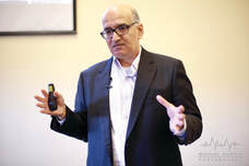 I am an author, speaker, executive coach. I guide people thrive on high stakes stage whether it's for a job interview, career advancement, a sales presentation or a high-stakes speech. I am the author of a practical book on speaking titled Winning Speech Moments: How to Achieve Your Objective with Anyone, Anytime, Anywhere. The main idea of the book is that if you want people to remember your speech and take action, you must create a winning speech moment. Please download the free speech checklist I created that I always use to create a winning speech for any occasion. Please contact me if you would like to thrive on high stakes stage. You can reach me at [email protected] or 732-847-9877. Note, if you are an author, executive, podcaster or very interesting to talk to and would like me to interview with five questions and then publish it as a blog post and promote it on LinkedIn, Twitter and Facebook, please contact me.  Dr. Umesh Rao Hodeghatta Dr. Umesh Rao Hodeghatta To succeed today, you have to get familiar with, and even master, artificial intelligence and machine learning. The companies that are thriving have mastered AI/ML. It has become table stakes very fast. Jim Cramer hosts a show on CNBC called "Mad Money" in the United States, that really should be called "Math Money." The reason for this is that he is constantly talking about companies like NVIDIA, Facebook, Amazon, and many others that have been making people mad money on Wall Street because of their mastery of data, math, and algorithms. They will continue to get bigger, cheaper, faster, better, and smarter because of their mastery of artificial intelligence and machine learning (AI/ML). AI/ML is making companies get bigger and people a lot of money. To better understand this difficult yet important subject, I came across an excellent article written by Dr. Umesh Hodeghatta titled "Challenges of Executing AI/Machine Learning Projects." The article lays out that there is a lot involved in successfully implementing AI/ML projects. Dr. Hodeghatta is a leading practitioner and thought leader in the field of AI/Machine Learning. He has authored two technical books: The Infosec Handbook: An Introduction to Information Security and Business Analytics Using R - A Practical Approach. He speaks about AI/ML at conferences all over the world. He has done over twenty webinars on BrightTALK. He has taught AI/ML at universities in both the United States and abroad. He is highly sought after for consulting by Fortune 500 companies. He is a co-founder of Nu-Sigma, an AI/ML solutions provider. So he is the right person to ask questions about AI/ML that many of you have, whether you work as an individual contributor or as a C-Level executive. Question 1 Can small companies take on AI projects? What is the approach you recommend they use? Yes, small companies can take on AI projects. Most of the small companies may have good quality data and may not know how to use it to drive some business problems. For example, a small solar light manufacturing company with 200-300 people may want to optimize its production line. They may have collected lots of data over a period and may have zeroed in on the bottleneck in their process. But they may not have an IT Technical team who are well versed with data, AI, or Machine Learning. Hence, they are not aware of how the data and AI can be applied to solve the problem in their process. It is not that we always require huge data for building models or running AI projects. It is the quality of data that matters in most cases. Some small companies may definitely have a good quality of data. Our recommendation to such small companies is to engage companies like NUSA Lab, who can help them deploy AI models to solve their business problems. If they do not have relevant data, we can work with them to collect such data required to train the AI model. Question 2 What do CEOs need to know before they embark on an AI/ML project so they can succeed? CEOs need to have the following information before they embark on an AI/ML project:
Understanding whether AI is a disruptive technology in your industry and how AI can be leveraged will be the critical skills for successful CEOs both now and in the future  Question 3 What methodology is used in successful AI/ML projects? NUSA Lab (N-U Sigma U-Square Analytics Lab LLP) has developed a framework that is proven to be effective. Here is our framework: We start with the data and find out the patterns or problems/issues/challenges where data is available. Else, we start with the business problem/issue/challenge in discussion with the organization. In the second scenario, we suggest the data to be collected if available or partially available. We then analyze the data, understand the data, and clean up the data using various relevant methods. Once the cleaned data is available, we determine a suitable algorithm to be applied to the data to ensure generalized learning on the data. We build the AI/ML model, optimize it, and validate it. In this process, we apply relevant optimization methods until we get a highly accurate generalized model. We also apply any relevant recent research which adds value to the project. Then we deploy the model on to production and keep checking the output vs. the expected output. In the process, we carry out the research, and we use that research in recalibrating the model, as and where required. We then redeploy the recalibrated model needed to ensure that the model is still valid despite the changes happening in the ecosystem. In the current world, change is the only constant. Question 4 What skills do you need to implement an AI/ML project? The following are the skills typically required to implement an AI/ML project effectively:
Question 5 How do you know whether you have the right data and enough of it that will result in AI/ML success? By analyzing the data related to the problem to be solved, we can make out if the right data is collected and available. Normally, we guide the organizations as to what data is required based on the problem/issue being solved. Nowadays, most organizations have a good amount of data, as most of them have moved to digital platforms. However, the quantity of data is secondary. The quality of the data is the most important. There are various ways we can augment the available data. If the problem/issue/challenge makes business sense, and we have quality data, we can always proceed. The relevant data may also be many times possible to be sourced from third-party agencies. Bonus Questions Dr. Hodeghatta answered all the questions I sent to him, so I have included them under bonus questions. Question Can you explain supervised learning, unsupervised learning, and reinforcement learning? When would you use one over the other, and can you use all three with the data you have? We use "supervised learning" for predicting a category or a class given that the model is trained based on the data whose categories are already labeled. When we say labeled, somebody, either from their experience or other means, has already classified the record into specific classes. Regression, Classification are some of the areas where we use Supervised Learning. We use unsupervised learning when we do not know the categories/classes to predict. There is no labeled data to train the model. It is not possible to label them, either because of the lack of evidence or the high cost of labeling. The model itself will identify the data class by categorizing it based on some measure (normally distance measures). Clustering is one of the methods which are part of unsupervised learning. We use reinforcement learning, particularly in those scenarios where there is a reward involved and later steps depend upon the earlier steps. Question If a CEO needs to see something quick before providing more funding for an AI/Ml project, what do you suggest an approach CEO should take? Analyze the data and show the pattern or carry out a small dummy-proof of concept and show the possible value. Question How can a CEO determine whether a data scientist is any good? What kind of questions should he be asking to a data scientist he is talking to? The CEO should make out the following characteristics of an effective data scientist:
According to us, I have listed above not the conclusive and exhaustive list but some of the key requirements. Question Since you hear AI/ML everywhere, how can a CEO determine whether a problem lends to automation or machine learning? Automation is straight forward. You know the rules of the game already. You need to program those rules, test that the rules provide the output as required, and deploy the solution or application. In the case of AI/ML, the patterns or rules are not known. Rules are the one learned by the AI/ML models and are generalized so that the model works effectively on a wide range of applicable data values. Question Can you explain how to mitigate or even eliminate bias in machine learning models and AI systems? Is the problem mainly with the data or algorithms? When you try to mitigate bias, is it possible to overcorrect so that there is a different kind of bias? A good data scientist always tries to eliminate the AI/ML models' bias by understanding if the model has generalized well. She/he applies various types of validation over a wide range of possible data points using appropriate evaluation methods to validate that the model has generalized well. A well-generalized model is typically not biased. The experiment is the key to the success of a scientist. A data scientist shall not hesitate to experiment to understand that there is no bias. To do that ideally, she/he should not carry any pre- notions. A detailed webinar is conducted by Dr. Hodeghatta, Umesh, on December 16th, 2020 regarding the bias in AI/ML models. You can register to learn more about "Bias in AI": https://www.brighttalk.com/webinar/bias-in-ai-and-machine-learning-models/?utm_source=social&utm_medium=social&utm_term=data&utm_content=umesh&utm_campaign=Big Three Book Recommendations on AI/ML for CEOs Predictive Analytics: The Power to Predict Who Will Click, Buy, Lie, or Die by Eric Siegel Small Data: The Tiny Clues That Uncover Huge Trends by Martin Lindstrom Analytics in a Big Data World: The Essential Guide to Data Science and its Applications by Bart Baesens Dr. Umesh Rao Hodeghatta's Contact Info: WebSite: http://www.mytechnospeak.com/ Email: [email protected] LinkedIn: https://www.linkedin.com/in/uhrao/ I want to thank Dr. Hodeghatta for answering the questions about a very important subject that is changing our world. #####  I am an author, speaker, executive coach. I guide people thrive on high stakes stage whether it's for a job interview, career advancement, a sales presentation or a high-stakes speech. I am the author of a practical book on speaking titled Winning Speech Moments: How to Achieve Your Objective with Anyone, Anytime, Anywhere. The main idea of the book is that if you want people to remember your speech and take action, you must create a winning speech moment. Please download the free speech checklist I created that I always use to create a winning speech for any occasion. Please contact me if you would like to discuss how you can work with me. If you are interested in inviting me to give a Zoom talk (during the pandemic) on job Interviewing. career development or high-stakes speaking, you can reach me at [email protected] or 732-847-9877. Note, if you are an author, content producer or interesting and would like me to interview with five questions and then publish it as a blog post and promote it on LinkedIn, Twitter and Facebook, please contact me. 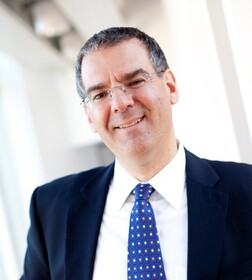 Ron Adner, Author of "The Wide Lens" and an award-winning professor of strategy at the Tuck School (Dartmouth) Ron Adner, Author of "The Wide Lens" and an award-winning professor of strategy at the Tuck School (Dartmouth) When you are innovating, you can do everything right and still fail. How is that possible? According to Ron Adner, he writes in his excellent book The Wide Lens that "your success depends not just on your ability to execute your own promises but also on whether a host of partners—some visible, some hidden—deliver on their promises too." Companies that innovate are adept at execution focus, such as gaining customer insights, building core competencies, and beating the competition. The pitfalls they run into are co-innovation risk and adoption risk. Co-innovation risk occurs when a company's innovation is dependent on the commercialization and affordability of other innovations. Adoption risk occurs when a company's innovation is dependent on partners' adoption of it so that end consumers can decide whether it satisfies their needs and their willingness to pay for it. After reading The Wide Lens, I had few questions for Ron Adner. I narrowed it to five questions whose answers are below: Five Questions Question 1: You point out how hard it is for companies to have innovation success. Do companies need to experiment with many innovations using the minimum viable ecosystem (MVE) approach to have a handful of successes? When companies innovate in ecosystems, their success depends on their ability to line up partners. The MVE is an approach to finding and organizing the starting coalition on the larger journey. Unlike an MVP approach, which is focused on discovery, and the MVE approach is focused on aligning – you need to have a good sense of where you are heading before approaching partners. If you don't, it will be hard to get them to commit at scale, and the risk is getting trapped in pilots. Question 2: Do you think China has changed the game when it comes to innovation? Is their approach different from the wide lens approach with the government playing an important role? Does their approach mitigate or even eliminate the co-innovation and adoption chain risks? Successful innovation in China, like everywhere else, depends critically on managing adoption chain risk and co-innovation risk. One difference in China is that the government can play a more active role in resolving these issues on both the regulatory and the incentive side. The Chinese approach is reminiscent of the role that Japan's Ministry of Industry and Trade (MITI) played in its rise through the 1970s and 80s. A second difference is one of context – China's rapid rise in prosperity interacts with what had been a challenged infrastructure to enable a fast path adoption. For example, where mobile payments in the West have to outcompete credit cards, in China the competition is cash in the absence of wide-spread credit cards. And when you combine that with the government wanting more traceable transactions, you can see why mobile payments would take off as quickly and penetrate as deeply as they have. These two differences in the Chinese approach are not a substitute for innovation, they allows innovations to scale and succeed faster. Question 3: Is innovation so complex today that only large companies like Apple, Amazon, Google, etc. can adopt the wide lens when it comes to innovation? If anything, innovation's complexity means that it is even MORE important for smaller firms to master the Wide Lens principles. The giants have the time and resources to take multiple shots on goal. We see them failing in many of their ecosystem ambitions (payments, health, mobility, all around, with shout-outs to Google showing how not to launch a game platform with Stadia, and Apple losing in the education market that gave them their start). There is plenty of room for innovation, and even ways to outcompete the giants, as long as you know how to change the game (this is the subject of my new book, Winning the Right Game, which will come out next year). Question 4: Do you think innovation success will ever be achieved by one company the way AT&T Bell Labs did by creating universal connectivity? Do you feel that companies will have to continue to overcome all three risks: Execution, Co-innovation, and Adoption Chain? Even the rise of the Bell network was the product of decades of ecosystem construction. Bell Labs was founded in 1876, so looking at Bell Labs in the 1970s is looking at the cutting-edge R&D lab of a long-established monopolist. Keep in mind too that Bell/AT&T did not capture the benefit of the vast majority of its inventions. Other innovators figured out not just execution at scale but also how to align the adoption chain and co-innovators that brought the inventions into mainstream reality… Everyone has to, or had to, deal with the Wide Lens issues. Question 5: As of this writing, Tesla's market capitalization is higher than GM and Ford combined. Can you briefly explain what made Tesla succeed in electric vehicle (EV) when Better Place could not? Market cap is variable, but the accomplishment is absolute. Telsa has succeeded in changing the game in EVs and – more impressively – in the automobile industry writ large. Better Place imploded because of an own-goal on execution and a clash of egos. There is a nice epilogue on their story posted at ronadner.com. Tesla's biggest disruption in my view is less EV per se (though that is huge) than the integration of software into so many parts of the car and the car network, which allows them to do unique things with upgrades, recalls, charging networks, acquiring autonomous driving data, etc. – an incredible achievement. In addition to Musk's innovative and strategic brilliance, he deserves credit for his ability to manage the finance side, bringing money forth from almost thin air. Bezos did this in the early days of Amazon, and that gave him the freedom to operate that he has used since. With Better Place, which had a strategy and model that I still think is superlative, the oxygen of capital simply ran out, and founder/CEO Agassi could not bring in the next critical tranche. It is a very disappointing end to what was a promising innovation. Bonus Question: Do you think Wall Street is more patient with charismatic CEOs like Jobs, Bezos, and Musk when they start making money with their innovation? Is charismatic leadership today a necessity for innovation success? Neither sufficient nor necessary, but it never hurts. : ) I want to thank Ron Adner for taking time out of his busy schedule to answer few questions I had about his book The Wide Lens. To learn more about Ron Adner: Book: The Wide Lens Web site at Dartmouth: Professor at Dartmouth Speeches: An Interview with Ron Adner re: The Wide Lens ##### 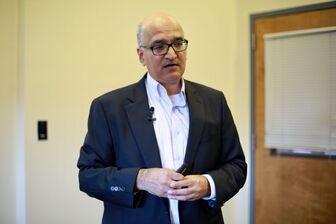 I am an author, speaker, executive coach. I guide people thrive on high stakes stage whether it's for a job interview, career advancement, a sales presentation or a high-stakes speech. I am the author of a practical book on speaking titled Winning Speech Moments: How to Achieve Your Objective with Anyone, Anytime, Anywhere. The main idea of the book is that if you want people to remember your speech and take action, you must create a winning speech moment. Please download the free speech checklist I created that I always use to create a winning speech for any occasion. Please contact me if you would like to discuss how you can work with me. If you are interested in inviting me to give a Zoom talk (during the pandemic) on job Interviewing. career development or high-stakes speaking, you can reach me at [email protected] or 732-847-9877. Note, if you are an author, content producer or interesting and would like me to interview with five questions and then publish it as a blog post and promote it on LinkedIn, Twitter and Facebook, please contact me.  David Kidder - founder, investor, speaker, and author. David Kidder - founder, investor, speaker, and author. I recently read an excellent book by David Kidder and Christina Wallace, New to Big. It is one of the best books I have read on entrepreneurship, especially how you can bring an entrepreneur mindset into large companies to enable growth. It is a playbook for large companies to not only survive but thrive by becoming "ambidextrous." They have to become a New to Big machine to build new businesses to sustain growth. Once it becomes big, the core can take that nascent business from Big to Bigger, which is their forte. A company's success in becoming good at both New to Big and Big to Bigger rests on a CEO being ambidextrous. CEOs are experienced at Big to Bigger but not New to Big. Using a football metaphor, it is akin to having Tom Brady being great at QB on offense and also being an excellent safety on defense. But that is what is needed for large companies to remain relevant. Every company wants a high valuation from Wall Street, but they don't know how to do it. Kidder explains at a high-level how a company can do this and turn it into its core competency. You don't have a choice. Either you are going to change or become roadkill. What should you do if you want your company to grow by becoming a New to Big machine?
Start now since your competitors are already doing it. Good Luck! Question 1: It is hard for companies to become and remain a powerful Big to Bigger machine. Should large companies attempt to become a New to Big machine, or should they instead focus on their core competencies and acquire successful companies at New to Big?
Question 2: What is the main reason that prevents a large company from becoming a New to Big machine?
Question 3: You write in your book that the "success of New to Big sits squarely with the CEO." So don't you need a CEO with experience in New to Big to make it work?
Question 4: Briefly, what should startups need to do to become a Big to Bigger machine? Should they attempt to become Big to Bigger by going IPO or sell to a large company or a private equity firm?
Question 5: Isn't New to Big hard to succeed in large companies partly because you are trying to create this machine in an artificial environment? By this, I mean entrepreneurs make many sacrifices to create a market, including taking low compensation. How do you create that hunger and urgency in a New to Big initiative in large companies where they have an escape path to Big to Bigger?
Bonus Question: You mention about Day One mindset that Jeff Bezos uses to keep Amazon a well oiled New to Big machine. But isn't he rare in that he has mastered being ambidextrous? Isn't that his secret sauce in making Amazon one of the most valuable companies on Wall Street?
Attributes + Skills of Day One Mindset: Obsession over customer problems + needs (not tech) Capturing impact of outside forces (right, on-time) Rediscovery + leveraging of proprietary gifts Outside-in vs. Inside-out: bold growth portfolios driving truth Speed + cost: lean experimentation, productive failure Five books recommended by David Kidder to get a deeper understanding of being an entrepreneur:
I want to thank David Kidder (founder, investor, speaker, and author) and Rachel Jerome (Marketing Manager) for their help with this blog post. David Kidder's Books: New to Big: How Companies Can Create Like Entrepreneurs, Invest Like VCs, and Install a Permanent Operating System for Growth The Startup Playbook: Secrets of the Fastest-Growing Startups from Their Founding Entrepreneurs David Kidder's Linkedin Contact: https://www.linkedin.com/in/davidskidder/ David Kidder's Website: https://www.davidskidder.com/ Bionic Website: https://onbionic.com/ The Science of Success Podcast Would You Bet Your Life On It? How to be Certain with David Kidder #####  I am author, speaker, executive coach. I guide people thrive on high stakes stage whether it's for a job interview, career advancement, a sales presentation or a high-stakes speech. I am the author of a practical book on speaking titled Winning Speech Moments: How to Achieve Your Objective with Anyone, Anytime, Anywhere. The main idea of the book is that if you want people to remember your speech and take action, you must create a winning speech moment. Please download the free speech checklist I created that I always use to create a winning speech for any occasion. Please contact me if you would like to discuss how you can work with me. If you are interested in inviting me to give a Zoom talk (during the pandemic) on job Interviewing. career development or high-stakes speaking, you can reach me at [email protected] or 732-847-9877. Note, if you are an author, content producer or interesting and would like me to interview with five questions and then publish it as a blog post and promote it on LinkedIn, Twitter and Facebook, please contact me. We all make assumptions. Occasionally, Frequently, they can lead to confusion, embarrassment and get us into trouble. But If assumptions are made in certain professions, (such as business, engineering and medicine), that are bad, they can prove to be disastrous. Neville Chamberlain, prime minister of Great Britain, made one of the most catastrophic assumptions in history. Chamberlain assumed that by letting Adolph Hitler take over Sudetenland in Czechoslovakia, he would stop there. This assumption was made after Hitler had already annexed Rhineland and Austria. Though Great Britain and France had the military strength to stop Hitler, they assumed that Hitler would be satisfied. This assumption led to WWII. The book to turn to so you learn not to make assumptions is “Stop Assuming,” by Professor Bob Schoenberg. The book teaches you techniques you can use to avoid making assumptions. I recommend you read, study, and practice those techniques. It will help you not make assumptions and, instead, make better decisions. Schoenberg defines assumptions as “thoughts we have that we think are true, but we don’t know that they’re true.” He writes that there are two types of assumptions: general and personal. General assumptions do not involve you and can be proven true or false. Personal assumptions do involve you and are hard to prove because you may not be aware of it. The book main focus is on personal assumptions which tend to be “hidden” and are restrictive and/or negative in nature. If we can better understand how we can easily fall into this trap it would help us avoid making deleterious personal assumptions. to turn avoiding personal assumptions into a habit requires work and lots of practice. But as you will see in the book, anyone can do it and it will benefit you immensely in life and business. The book has many techniques you can learn to stop making assumptions. One of the simple techniques Bob writes about is Special Role Play. He writes how it works:
Below are five questions I posed to Bob about assumptions after reading the book. Question 1: I don’t believe I was ever taught this when I attended school. Is this skill taught in any school, or is this skill taught to those on an executive track to become effective leaders? The ability to identify and recognize assumptions is a critical thinking skill taught at the Critical and Creative Thinking Program at UMASS, Boston. However, they don’t focus on “personal assumptions.” I do that in my book, and in a non-credit course I teach. Question 2: Aren’t we making a lot of assumptions every day, so do you suggest keeping a log and review them at night to see how you did and what you need to do to refine your assumptions? Everyone makes assumptions, even I do. The important thing is to recognize that you are making an assumption and “challenge” it. Attempt to find out if it is true or false. Personal assumptions, although “hidden”, can easily be identified when you notice yourself using the phrase, “I can’t”. Question 3: We have a president who made an assumption---even with all the available resources---that COVID-19 Virus will simply go away. And as of this writing, we have over 165,000 COVID-19 related deaths. And he still has the job. So why should one learn what you teach when there are no consequences for making wrong assumptions repeatedly? Isn’t this a problem that the person holding the most important job in the world can get away with impunity for making terrible assumptions? There are indeed consequences, even for President Trump. We still live in a Democracy, and he could be voted out of office if people are dissatisfied with how he handled the COVID 19 virus. He will only get away with it if people vote for him, which indicates that they are satisfied with how he has been running the country. The majority of people are not satisfied with how he has handled the Virus. We will see what happens on Election Day. Question 4: Herman Cain recently died from contracting the COVID-19 Virus. He assumed that COVID-19 was not a threat and did not take adequate precautions such as social distancing and wearing a mask. He was a very successful businessman and gained a lot of attention when he ran for president in 2012. Aren’t we hardcoded in what we want to assume such that no supporting facts will change our beliefs? I don’t know enough about neuro-biology to answer the question about being hard-wired to our beliefs. Some people make up their minds and don’t want to be “confused” with the facts. People have different reasons for what they believe. Many people have taken a health crisis and turned it into a political issue. To change your belief, you have to be open to change. Beliefs are often very strong and entrenched. It takes a certain degree of open-mindedness and even courage, to even entertain the idea that maybe the belief you have isn’t valid. Question 5: Can this approach be used when you are giving a speech, sales call, and negotiation? Identifying and challenging assumptions, both general and personal, can be used in all of the above situations. This is a skill that takes practice, like all skills. However, there are more than assumptions at work here. You could definitely use this skill before you go to a sales call, but if the prospect doesn’t need your service or product, she won’t buy it. If you try and give a speech to a group of people who are opposed to your topic, you still might have a difficult time delivering the speech. Lastly, some of the best negotiators can’t resolve an issue if people are not willing to listen to the other side. There are many more skills involved in each of these activities. ##### 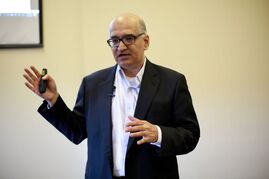 Jay Oza is an author, speaker, executive coach. He makes people thrive on high stakes stage whether it's for a job interview, a sales presentation or a high-stakes speech. He is the author of a practical book Winning Speech Moments: How to Achieve Your Objective with Anyone, Anytime, Anywhere. You can get this book on Amazon for 99 cents for a limited time. Please download the free speech checklist that you can use to help you create a winning speech for any situation. Please contact him if you would like to have a two 75 minute coaching session on job interviewing or high-stakes speaking. If you are interested in inviting him to give a talk on job Interviewing or high-stakes speaking. You can reach him at [email protected]. 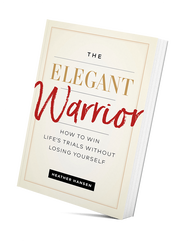 What can we learn from lawyers? A lot. Lawyers advocate for their clients in front of jurors who will make the critical decision whether to acquit or convict their clients. That is high stakes. The skills lawyers use to advocate for their clients are the same skills we all have to learn and master to effectively advocate for ourselves and others, when necessary. Heather Hansen has written an excellent book, "The Elegant Warrior" that teaches us how to effectively advocate for our position in life, business and at home. She has captured this in her book from her twenty years of experience working as a lawyer. The book is short and simple but packs a lot of punch. I learned a lot from this book; hence, I had so many questions after reading it that Heather was kind enough to answer a few of them below. I highly recommend you get this book, read it, study it, and practice what Heather teaches. Soon you will start seeing results when you have to advocate for yourself if you want to win. As Heather points out, if you are well prepared and ready to fight, the other side will be highly motivated to settle with you rather than duke it out with you in a trial which is unpredictable. Now, don't you wish you had this critical skill for success? You can learn more from Heather by listening to her podcast The Elegant Warrior Podcast with Heather Hansen. Also, you can get more information about Heather Hansen on her website heatherhansenpresents.com. Question 1 When someone tells a story, how do you know that you are not being manipulated? The short answer is practice. Twenty years of watching people answer questions at deposition and at trial have made me adept at reading the tone of voice and body language. But the best way to be sure is to compare the story to other evidence. For example, if you're a customer going to buy a car, you have the evidence of competitors' prices, online reviews, past experience with cars. Some types of evidence are more relatable than others. Still, I try to collect as much evidence as possible before making a judgment, and I recommend others do the same. Question 2 Do you role play with your clients before putting them on the stand so they are well prepared to handle anything the opposing attorney may throw at them? Yes! Role-playing is vital any time you have to advocate for yourself. Being on the stand is stressful and completely outside of my clients' comfort zone. The more we practice the more comfortable it becomes. And if I can ask tougher questions in our "mock cross exams" than opposing counsel does at trial, I've done my job. Question 3 What keeps the jury's attention in a case since people today don't have a long attention span? Isn't this a challenge today not only for lawyers but non-lawyers too? You'd be surprised at how invested jurors become. Most people don't want to be chosen, but once they are, they work hard to pay attention. That said, they do fall asleep. Often. I find my voice is helpful because I'm often the only woman in the courtroom. Surprises keep jurors interested, and my voice is a surprise after hearing male voices for hours. I try to incorporate other surprises too. Question 4 As you mention in your book that jurors are human, so do they occasionally get swayed by lawyer's performance more than the evidence that the lawyer has presented? Yes. In many ways, a trial is often like theater, and the one who puts on the best show wins. I have never had a doctor on one of my juries. But one thing I have going for the doctors I represent in a trial is that every juror is a patient. So I think, as humans, jurors are more swayed by their personal experiences and perspectives as a patient. And that is hard to overcome. Question 5 You write not to "fake it 'till you make it," but grow it. But don't we all occasionally have to fake it to get a foot in the door so we get the opportunity to grow it. I think faking it never works. I think you have to find something inside that you have real confidence in and show that until it grows. I know juries can read fake from a million miles away, and they hate it. But if a client shows them some humor, some confidence, some love for what they do, the jury responds with interest, and then the confidence grows. Bonus Question You wrote short chapters that got to the point. Is this based on how you would present a case to the jury by keeping it short, simple, and to the point? You use the following format: Heading, Famous Quote, Story with a Lesson, Proof, Summary. Is this something you ever use when you are presenting to the jury? It is similar. We also write briefs in a similar format. But I think my preference for short chapters comes from the TV Work I do. On TV, I have one minute to make my point. That makes you very aware of how much time you're taking from a person's life..... Five Book Recommendations by Heather Hansen: 1-To Sell Is Human: The Surprising Truth About Moving Others by Daniel Pink 2-The Boy, the Mole, the Fox and the Horse by Charlie Mackesy 3-Can You Hear Me Now? How to Connect with People in a Virtual World by Nick Morgan 4-Data Story: Explain Data and Inspire Action Through Story by Nancy Duarte 5-What Do You Do With an Idea? by Kobe Yamada ##### 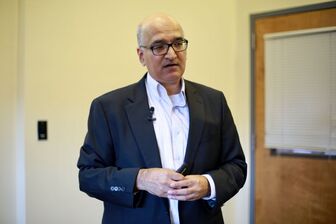 Jay Oza is an author, speaker, executive coach. He makes people thrive on high stakes stage whether it's for a job interview, a sales presentation or a high-stakes speech. He is the author of the book Winning Speech Moments: How to Achieve Your Objective with Anyone, Anytime, Anywhere. Please download the speech checklist that you can use to help you with your next high stakes speech. Please contact him if you would like to have a two 75 minute coaching session on job interviewing or high-stakes speaking or interested in inviting him to give a talk on job Interviewing or high-stakes speaking at your event. You can reach him at [email protected]. |
AuthorJay Oza Archives
July 2024
Categories
All
|
© 2017 Winning Speech Moments

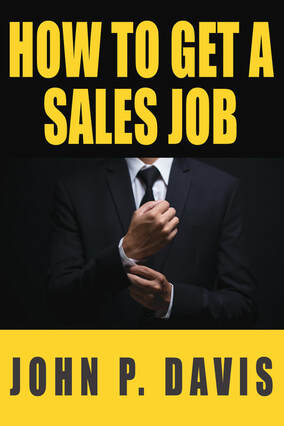
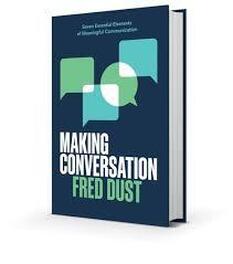
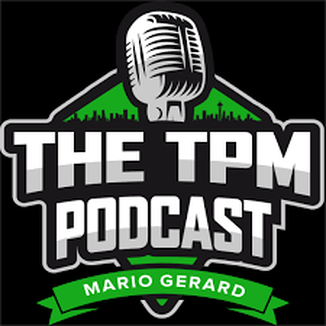

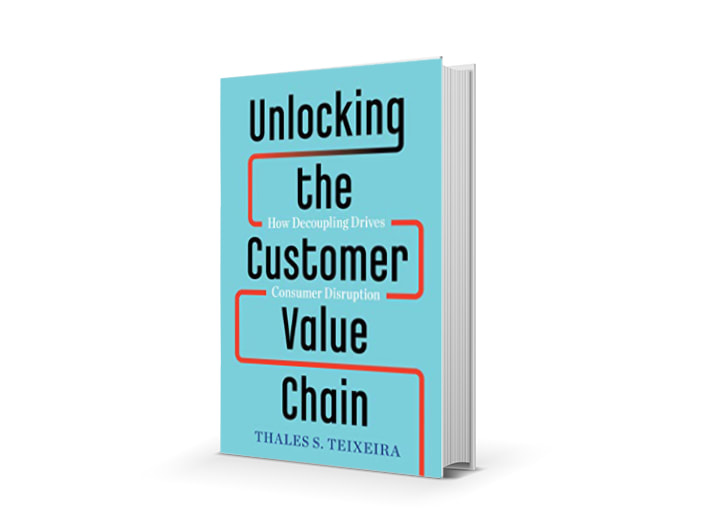
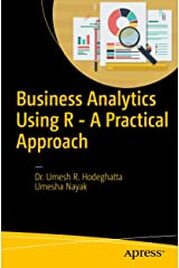
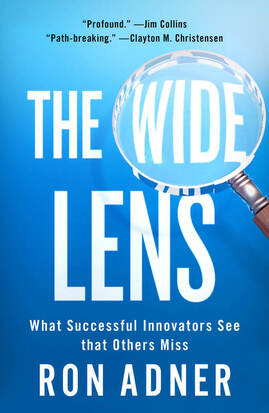
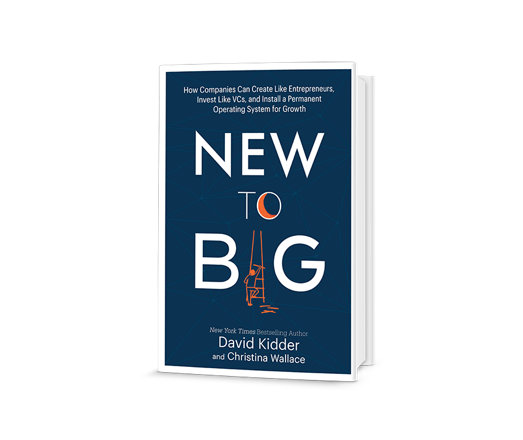


 RSS Feed
RSS Feed